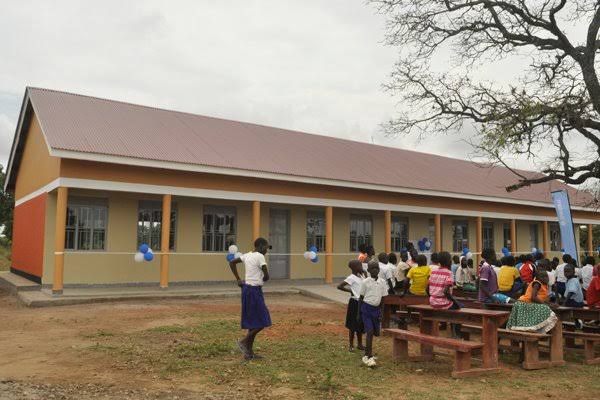
Lamogi-Omenykimac Primary School in Paiula Sub-county, Pader District has registered a significant increase in the enrolment of pupils, following the construction of a modern multi-million classroom block at the institution.
With three classrooms, a store and an office, the new block has reportedly changed the parents’ perception of the school.
“Before this building, the enrolment was at only 200 learners but when the construction of the building started, parents began bringing their children back,” Mr Otto said, adding that the enrolment has since climbed to 667 pupils.
However, he said the school lacks enough teachers, classroom blocks and furniture, which still pose a huge challenge in the operation of the school.
“The district education office has sent us two teachers to make us eight,” Mr Otto said.
The dilapidated structures around the school premises did not have chalkboards and furniture.
At the start of last year, World Vision Uganda partnered with Sanlam Foundation Trust (SFT), to embark on the construction of the Ugx 162.2 million structure and also stock the school with furniture and other learning tools.
The funding is part of the Shs670million Pader Education Strengthening Project (PESP) that the organizations injected in the district to improve access to education.
Mr Eric Okonye, the World Vision’s regional programme manager, said a past assessment indicated that many schools in the district still struggle with lack of learning tools, dilapidated or no facilities, which has resulted in poor performance and an increased illiteracy levels.
“The environment in which teaching takes place is a critical contributor to the children’s capacity to not only learn while in class but also attend school in the first place,” he said.
“In Pader alone, we are revamping 10 schools, including Dagodwong P/S, where we are establishing new classrooms but we are doing the same in more than 50 schools across the country,” Mr Okonye added.
Mr Emmanuel Okware, the Pader deputy RDC, applauded the project, saying revamping learning in the district requires collective effort from all stakeholders.
“There is a lot that needs to be done that is beyond having a new classroom block, which ranges from boosting teachers capacity by training of more teachers and opening more literacy centers in the area,” Mr Okware said.
Mr Jason Evans, the World Vision national director, said dilapidated infrastructure can disrupt lessons and makes learners more likely to abscond or even drop out of school.
“Teachers too do not have any permanent residence within or nearby the school, with the majority trekking over 5km to and from school. This has led to teachers’ absenteeism, especially during the rainy season as the roads tend to be impassable,” he said.
Mr Evans added that World Vision seeks to support the education of 2.5 million children in the country through providing a conducive learning environment.

Comments are closed.